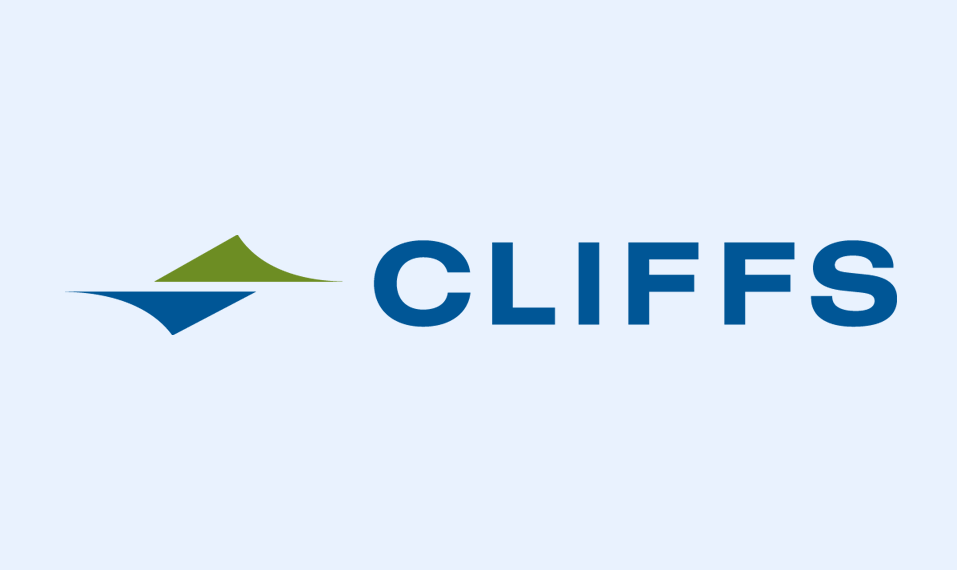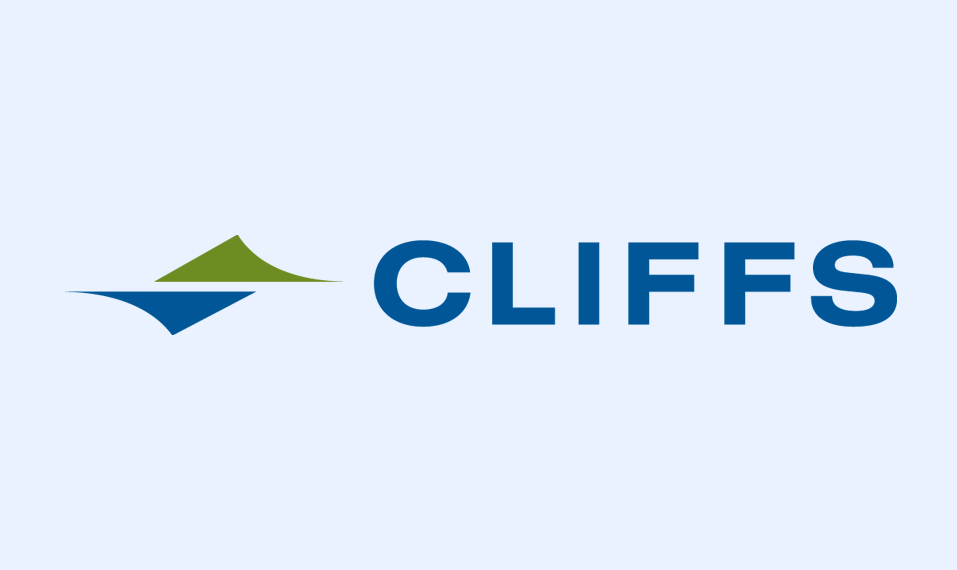Cleveland-Cliffs Misses Q4 Estimates, Stock Drops 7%

Cleveland-Cliffs (NYSE:CLF) delivered disappointing fourth-quarter results, with both earnings and revenue falling short of analyst expectations, leading to a more than 7% drop intra-day today.
The steelmaker reported an adjusted loss per share of $0.68, significantly missing the expected loss of $0.46. Revenue came in at $4.3 billion, falling short of the $4.54 billion consensus estimate, reflecting weaker-than-anticipated sales performance.
The company posted an adjusted EBITDA loss of $81 million, wider than the $61 million projected by the analysts. However, it was slightly better than the company's preliminary guidance of an $85 million loss, offering a small silver lining.
Cleveland-Cliffs also burned through $677 million in cash during the quarter, further highlighting ongoing financial pressures.
| Symbol | Price | %chg |
|---|---|---|
| 005490.KS | 327000 | 1.53 |
| KRAS.JK | 332 | -3.01 |
| 004020.KS | 34050 | 0.88 |
| 5401.T | 636.4 | 0 |

Cleveland-Cliffs Inc. (NYSE:CLF) Shifts Focus to Automotive-Grade Steel
- Cleveland-Cliffs Inc. (NYSE:CLF) surpasses estimated EPS but faces a slight revenue shortfall in its latest earnings report.
- The company is strategically moving towards producing automotive-grade steel, aiming to enhance its market position in the automotive industry.
- Despite current negative earnings, CLF's venture into the rare earths mining sector and strategic focus on higher-value products could lead to future growth and diversification.
Cleveland-Cliffs Inc. (NYSE:CLF) is a leading steel producer in the United States, known for its focus on producing high-quality steel products. The company is strategically shifting towards automotive-grade steel, aiming to secure a stronger foothold in the automotive industry. This move is supported by new contracts with original equipment manufacturers (OEMs), which could enhance its market position.
On October 20, 2025, CLF reported an earnings per share (EPS) of -$0.45, surpassing the estimated EPS of -$0.48. Despite this, the company faced a revenue shortfall, generating approximately $4.73 billion, slightly below the estimated $4.79 billion. This reflects a decline from the previous year's loss of $0.33 per share, as highlighted by Zacks.
Cleveland-Cliffs is reducing its capital expenditures, aiming for better margins and improved revenue quality in 2026. The conclusion of the ArcelorMittal slab supply contract and a cyclical recovery in steel prices are expected to provide significant upside for the company. This strategic focus on higher-value products could lead to enhanced profitability.
The company is also venturing into the rare earths mining sector, signaling a significant pivot in its business strategy. This move has been positively received by the market, with the stock experiencing a jump. The ambition to enter the rare earths game could open new avenues for growth and diversification, despite current negative earnings.
Financially, CLF has a price-to-earnings (P/E) ratio of -4.74, indicating negative earnings. Its price-to-sales ratio is 0.42, suggesting the stock is valued at 42 cents for every dollar of sales. The debt-to-equity ratio is 1.28, showing more debt than equity, but a current ratio of 2.04 indicates strong liquidity to cover short-term liabilities.

Cleveland-Cliffs Inc. (NYSE:CLF) Surpasses Earnings and Revenue Estimates
Cleveland-Cliffs Inc. (NYSE:CLF) is a prominent player in the steel industry, known for its production and supply of iron ore pellets and steel products. The company operates in the Zacks Steel - Producers industry and has a significant presence in the North American market. Its competitors include major steel producers like U.S. Steel and Nucor Corporation.
On July 21, 2025, CLF reported its earnings, revealing an earnings per share (EPS) of -$0.50, which was better than the estimated EPS of -$0.61. This result also surpassed the Zacks Consensus Estimate of a $0.68 loss, marking an earnings surprise of 26.47%. Despite the negative EPS, this performance was a relief to investors, as highlighted by the stock's increase following the earnings report. The company's revenue for the quarter was approximately $4.93 billion, surpassing the estimated revenue of about $4.90 billion. This figure exceeded the Zacks Consensus Estimate by 0.62%, although it was slightly lower than the $5.09 billion reported in the same quarter last year. Cleveland-Cliffs has managed to exceed consensus revenue estimates three times in the last four quarters, showcasing its ability to perform better than expected.
Despite the challenges, Cleveland-Cliffs achieved record steel shipments totaling 4.3 million net tons. However, the company reported a GAAP net loss of $470 million, which includes $323 million in non-recurring charges related to idled facilities. On an adjusted basis, the net loss was $247 million, or -$0.50 per diluted share, with an adjusted EBITDA of $97 million, marking a $271 million improvement.
Cleveland-Cliffs faces financial difficulties, as indicated by its negative price-to-earnings (P/E) ratio of approximately -2.94 and a negative earnings yield of -33.96%. The company's debt-to-equity ratio is 1.28, suggesting a higher level of debt compared to equity. However, the current ratio of 2.04 indicates a strong ability to cover short-term liabilities with short-term assets, providing some financial stability.

Cleveland-Cliffs Inc. (NYSE:CLF) Quarterly Earnings Preview
- Cleveland-Cliffs Inc. (NYSE:CLF) is expected to report a challenging quarter with an estimated EPS of -$0.67 and projected revenue of $4.9 billion.
- Zacks Investment Research suggests CLF might surpass the consensus estimate of a quarterly loss of $0.65 per share, potentially impacting the stock price positively.
- The company faces margin challenges and a revenue decrease of nearly 4% year-over-year, with a negative P/E ratio of -3.93 and an earnings yield of -25.43%.
Cleveland-Cliffs Inc. (NYSE:CLF) is a major player in the mining and steel industry, primarily focused on producing iron ore pellets and steel products. The company is set to release its quarterly earnings on July 21, 2025. Analysts expect a challenging quarter with an estimated earnings per share (EPS) of -$0.67 and projected revenue of $4.9 billion.
Despite these projections, Zacks Investment Research anticipates that CLF might surpass earnings estimates. The consensus estimate is a quarterly loss of $0.65 per share, slightly better than Wall Street's forecast. This potential earnings surprise could positively impact the stock price, although a miss might lead to a decline.
Cleveland-Cliffs faces ongoing margin challenges, with revenues expected to decrease by nearly 4% compared to the same quarter last year. The company is working on cost-cutting measures and has introduced a new anneal line, which is expected to contribute to revenue. However, profitability may remain elusive until the second half of the year when full savings are realized.
The company's financial metrics reflect its current challenges. With a negative P/E ratio of -3.93 and an earnings yield of -25.43%, CLF is experiencing negative earnings. The price-to-sales ratio of 0.25 indicates that investors are paying 25 cents for every dollar of sales, while the enterprise value to sales ratio is 0.65, showing the company's valuation relative to its sales.
Cleveland-Cliffs has a debt-to-equity ratio of 1.22, indicating a higher level of debt compared to equity. However, the current ratio of 2.13 suggests a strong liquidity position, allowing the company to cover its short-term liabilities. As the company navigates its financial challenges, the upcoming earnings call will be crucial in understanding management's outlook and strategy.

Cleveland-Cliffs Inc. (NYSE:CLF) Faces Financial Strain Amid Industry Challenges
- Cleveland-Cliffs Inc. (NYSE:CLF) reported a larger than expected adjusted loss and an 11% decline in revenue for the first quarter of 2025.
- The company announced plans to idle six steel plants, indicating a strategic shift towards focusing on the automotive industry.
- Financial metrics reveal a negative price-to-earnings (P/E) ratio of -2.71 and an earnings yield of -36.85%, alongside a current ratio of 2.13 and a debt-to-equity ratio of 1.22.
Cleveland-Cliffs Inc. (NYSE:CLF) is a prominent player in the steel industry, primarily focusing on producing flat-rolled steel products. The company has been navigating through challenging times, as evidenced by recent financial disclosures. On May 23, 2025, Graham James D, the Executive Vice President, Chief Legal Admin & Secretary, sold 120,000 common shares at approximately $6.85 each. Despite this sale, he still holds 492,248.792 shares.
The company's financial performance has raised concerns, leading to investigations by Levi & Korsinsky and Bronstein, Gewirtz & Grossman, LLC. Cleveland-Cliffs reported a larger than expected adjusted loss and an 11% decline in revenue for the first quarter of 2025, totaling $4.63 billion. This financial strain has prompted the company to announce plans to idle six steel plants, as highlighted by the CEO's comments on underperforming non-core assets and lower index prices.
Cleveland-Cliffs is undergoing a strategic shift, moving away from non-core markets like rail and specialty plate products to focus on the automotive industry. This transition aims to stabilize the company's financial health amid the challenges it faces. The company's current financial metrics reflect these difficulties, with a negative price-to-earnings (P/E) ratio of -2.71 and an earnings yield of -36.85%, indicating negative earnings.
Despite these challenges, Cleveland-Cliffs maintains a current ratio of 2.13, suggesting it has more than twice the current assets compared to its current liabilities, which indicates good short-term financial health. However, the debt-to-equity ratio of 1.22 shows that the company has more debt than equity, which could pose long-term financial risks. The enterprise value to sales ratio of 0.58 and the price-to-sales ratio of 0.17 further highlight the company's valuation challenges.

Cleveland-Cliffs Misses Q4 Estimates, Stock Drops 7%
Cleveland-Cliffs (NYSE:CLF) delivered disappointing fourth-quarter results, with both earnings and revenue falling short of analyst expectations, leading to a more than 7% drop intra-day today.
The steelmaker reported an adjusted loss per share of $0.68, significantly missing the expected loss of $0.46. Revenue came in at $4.3 billion, falling short of the $4.54 billion consensus estimate, reflecting weaker-than-anticipated sales performance.
The company posted an adjusted EBITDA loss of $81 million, wider than the $61 million projected by the analysts. However, it was slightly better than the company's preliminary guidance of an $85 million loss, offering a small silver lining.
Cleveland-Cliffs also burned through $677 million in cash during the quarter, further highlighting ongoing financial pressures.

Cleveland-Cliffs Inc. (NYSE:CLF) Faces Analysts' Cautious Outlook Despite Market Presence
- The average price target for Cleveland-Cliffs Inc. (NYSE:CLF) has significantly decreased from $18.31 to $11, indicating a cautious outlook from analysts.
- Factors such as changes in demand, fluctuations in raw material prices, and broader economic conditions have contributed to this shift in sentiment.
- Despite a recent surge in CLF's stock price by 17.9%, the trend in earnings estimate revisions suggests limited potential for further price increases in the near term.
Cleveland-Cliffs Inc. (NYSE:CLF) is a leading flat-rolled steel producer in North America, providing a diverse array of steel products and raw materials. The company caters to various sectors, including automotive, infrastructure, manufacturing, and steel production. Despite its strong market presence, the consensus price target for CLF's stock has notably declined over the past year.
The average price target for CLF has dropped from $18.31 last year to $11 last month and last quarter. This significant decrease indicates a more cautious outlook from analysts regarding the company's future performance. Factors such as changes in demand for steel products, fluctuations in raw material prices, and broader economic conditions may have contributed to this shift in sentiment.
Analysts, as highlighted by Zacks, predict a decline in Cleveland-Cliffs' earnings in the upcoming financial report. This suggests that the company may not have the right combination of factors to exceed earnings expectations. Despite this, analyst Emily Chieng from Goldman Sachs has set a higher price target of $24 for CLF, indicating some optimism about the stock's potential.
Recently, CLF's stock price surged by 17.9% in a single trading session, with trading volume exceeding the average. However, the current trend in earnings estimate revisions suggests that further price increases may not occur in the near term. Investors should closely monitor upcoming earnings reports and strategic initiatives to better understand the stock's potential trajectory.







